12 Tips for Camping with a Reactive Dog
For outdoor travel lovers, camping is the perfect opportunity to relax and reconnect with nature. But the thought can be daunting for those of us with reactive dogs.
Camping with a reactive dog isn’t always easy – but that doesn’t mean it’s impossible!
In this post, I am going to share 12 tips that we have learned firsthand from adventuring with our reactive pup, Lucifer.
We hope it inspires other dog parents to consider travelling with their reactive dogs.
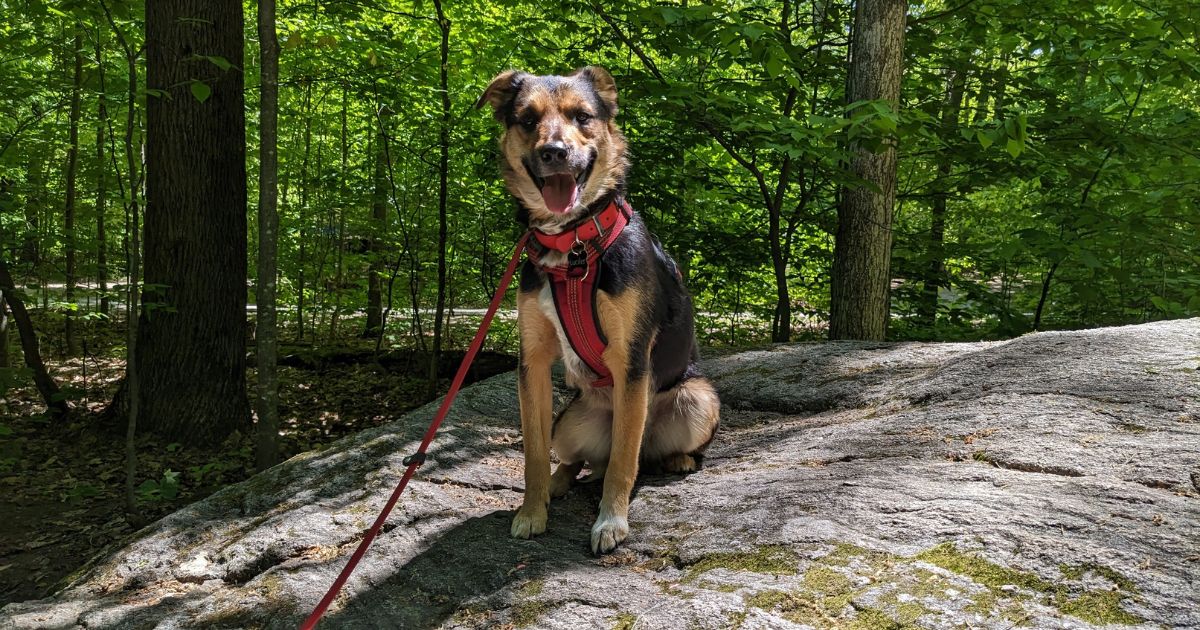
This post contains affiliate links, which means if you click and buy, we will make a commission (at no cost to you). See my full disclosure policy for more details.
Can You Take a Reactive Dog Camping?
Yes! With the right preparation, patience, and awareness of your dog, travelling together can be a rewarding experience.
In fact, when appropriately planned, camping provides a unique opportunity to spend time with your reactive dog without worrying about large crowds or other common triggers.
But you need to be sure that you know your dog and their limitations.
While some reactive dogs will thrive in a camp setting, this will depend on their individual triggers. For example, a dog triggered by wildlife may struggle with being out in the wilderness.
Other factors to consider when deciding if you should bring your dog include:
- How busy is the campground?
- Does your dog have high anxiety in new or unknown situations?
- Are there any medical concerns that could make camping unpleasant or uncomfortable?
- How far is the trip to the campsite? Does your dog struggle with car rides?
- Are YOU prepared to supervise and manage your reactive dog throughout your trip?
We encourage pet parents to include their pets in their travel plans, but there are some situations where it’s better for everyone to find a safe and trustworthy pet sitter or kennel for the duration of your vacation.
How Do You Calm a Reactive Dog?
One major concern when camping with a reactive dog is what to do if something goes wrong.
If you’re out walking your dog around the campground or relaxing at your campsite when someone passes by, and your dog goes CRAZY, what do you do?
First and foremost, stay calm! Your dog feeds off your energy, so you don’t want to make it worse.
Reactivity can present as jumping, barking (angry, fearful, or happy), growling, whining, or pacing. This often looks aggressive, even if your dog’s reactivity is completely based on being overly happy and excited.
The goal with a reactive dog is to avoid letting them be pushed over the threshold. But that isn’t always possible.
Begin by removing the trigger. This could mean blocking the view of a dog or person with your own body or removing your dog from the area.
Talk calmly yet firmly, directing your dog’s attention back towards you. Each time they look away from the trigger, make eye contact with you or exhibit calm behaviour, reward them.
Be patient and consistent. Your dog may take a while to settle if they are very worked up.
Finally, move on to a safe space or a positive activity your dog can enjoy. Ending on a happy note will help to build a positive association with this desired behaviour.
Tips for Successfully Camping with a Reactive Dog
Planning a camping trip can be stressful if your dog struggles with reactivity.
Try to remember that you can’t control everything. Setting realistic expectations will help you prepare for a trip you can both enjoy.
Situations will arise that are less than ideal…
Okay, that’s downplaying it. Situations will arise that are utter chaos, and all you can do is make the best of it.
Here are 12 tips for a safe and low-stress camping trip with your reactive dog.
Book a Quiet, Private Campsite
When booking your next adventure, take some time to consider both the park that you’re visiting and the campsite you will be staying on.
Avoid camping at the busiest and most popular parks during the peak summer season. Instead, consider exploring a quieter park or planning your trip during the spring and fall months.
If possible, seek a secluded campsite that offers as much privacy as possible.
Look for sites surrounded by trees and vegetation or distanced from other campsites. Don’t forget to consider the traffic that can be expected camping near a trailhead, bathroom, water tap, parking lot, beach access point, or boat launch.
Create Privacy, if Necessary
If your campsite doesn’t naturally offer the privacy that your dog requires, you may need to think outside the box to create it.
For example, last weekend, we were camping at Awenda Provincial Park. While the site offered some great privacy in most areas, there was a clear view of the road in one spot.
Lucifer is a visually triggered dog. He can hear sounds and not care, but if he sees a strange man walking alongside his site, it will set him off.
To address this concern, we hung a rope between two trees and used it to suspend tarps and create a tarp wall. We used tent pegs and pieces of wood to secure the bottom, preventing it from flying up in a breeze.
It may not have looked fancy, but it allowed Lucifer to relax and enjoy his weekend camping (which meant we could relax too).
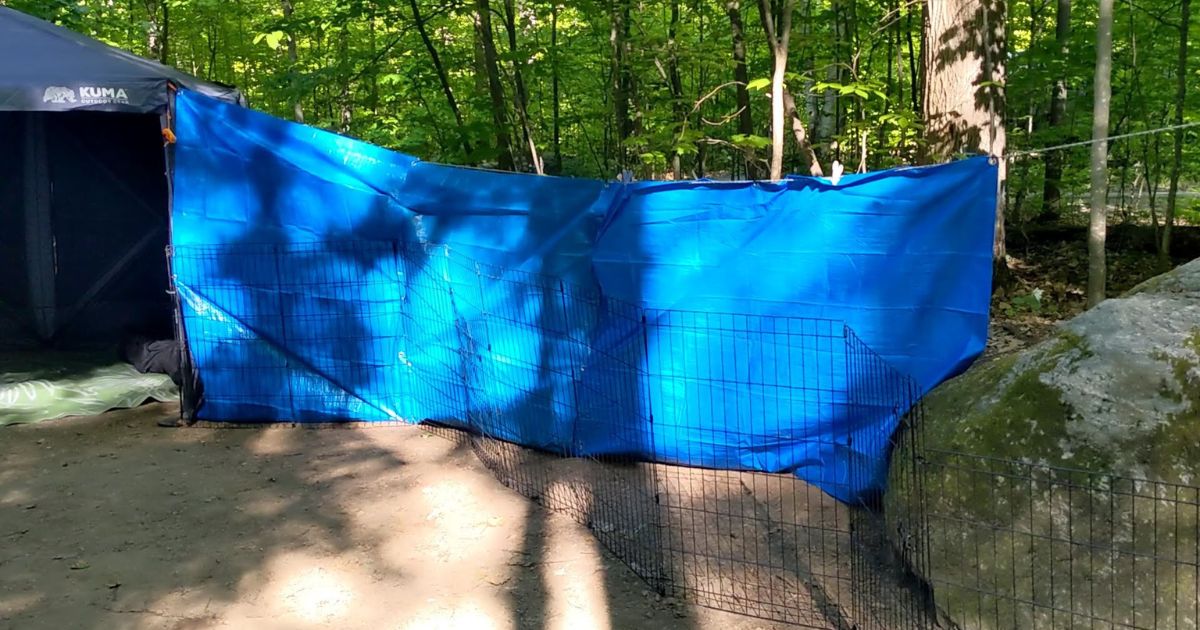
Consider Using a Radio
Do you have a reactive dog that is triggered by sounds? If so, a tarp wall may not be enough to meet your dog’s needs.
One solution that works for many dog parents is to run a radio quietly with relaxing music.
Avoid turning the music too loud, as this could be disruptive to other nearby campers. You should keep the music low enough that it can’t be heard off your site.
There have been several scientific studies focused on the use of music therapy for dogs!
Try experimenting with different music genres, artists, and songs at home. When playing it, note any impact it has on your dog’s behaviour and create a playlist of songs that help them relax.
Set Up a “Safe Space” for Your Dog
Rather than stressing about setting up your entire campsite to suit your dog’s needs, focus on creating a safe space where they can relax.
Select a spot on the site as far away from outside noises and other people as possible.
Set up your dog’s tie-out or pen in this area. Ensure that you include a shaded area in the warm, sunny weather or a sheltered place for winter camping.
Include a place for your dog to nap, like a raised dog bed, and some opportunities for entertainment, mental enrichment, and distraction (we’ll touch on that more below).
Bring “Comfort Items”
One tip often used when placing a young puppy or adopted dog in a new home is using a dog’s favourite comfort items, like a blanket or stuffed toy, to help them adjust to a new space.
These items carry a familiar scent that can help relax your dog, reducing stress and anxiety.
Another option that works for some dogs is to include a piece of your clothing, like a t-shirt or sweatshirt that you have worn.
In the days leading up to a camping trip, we sleep with a small fleece blanket in our bed. When we go camping, that blanket is placed on Lucifer’s bed.
Come Prepared with Plenty of Treats
We are strong supporters of positive reinforcement training with our dogs.
This, of course, requires having a way to reward close at hand. For some dogs, verbal praise, attention, or their favourite toy can work.
But those options aren’t always enough early in training or when faced with a significant trigger or temptation. At these times, high-value dog treats are key.
There are four types of treats we always pack for our crew:
- Charlee Bear: Lucifer LOVES their grain-free crunch line of treats. These are pocket friendly and perfect for carrying around the campsite or trails.
- Dehydrated Treats: We rotate several brands, including different flavours. The best part about dehydrated treats is that they are single-ingredient, making them allergy-friendly, with no unwanted additives.
- Carrots: Our dogs LOVE crunching on a whole carrot, just as many would a bone. They can easily be thrown in the cooler, offering a great distraction at the campsite.
- Earth Animal No-Hide Chews: Speaking of bones and chews, the No-Hide line from Earth Animal is a favourite with our dogs. This is a great option to keep them entertained and happy at the campsite, especially when faced with rainy weather.
Exercise Your Dog Regularly
As you have likely heard before, a tired dog is a happy dog. This is why both mental and physical enrichment are so important.
Make time each day to get out and exercise your dog.
Whether it’s walking around the campground (if it’s not too busy) or hitting a local trail, you need to encourage your dog to be active.
Be sure to let them sniff and explore their surroundings. This will add to the mental enrichment element, helping to tire them out faster than physical activity alone.
Another excellent option for exercise, especially for senior dogs or those with joint-related injuries, is swimming.
Plan Activities Carefully
When planning activities like hiking, swimming, canoeing, or kayaking, select your location and schedule strategically.
Try to choose low-traffic trails to minimize the risk of running into people or other dogs that can trigger their reactivity. The same goes for selecting a swimming location or lake.
If you are set on visiting a more popular spot, plan to head out during less popular times, like early morning when most people are sleeping in.
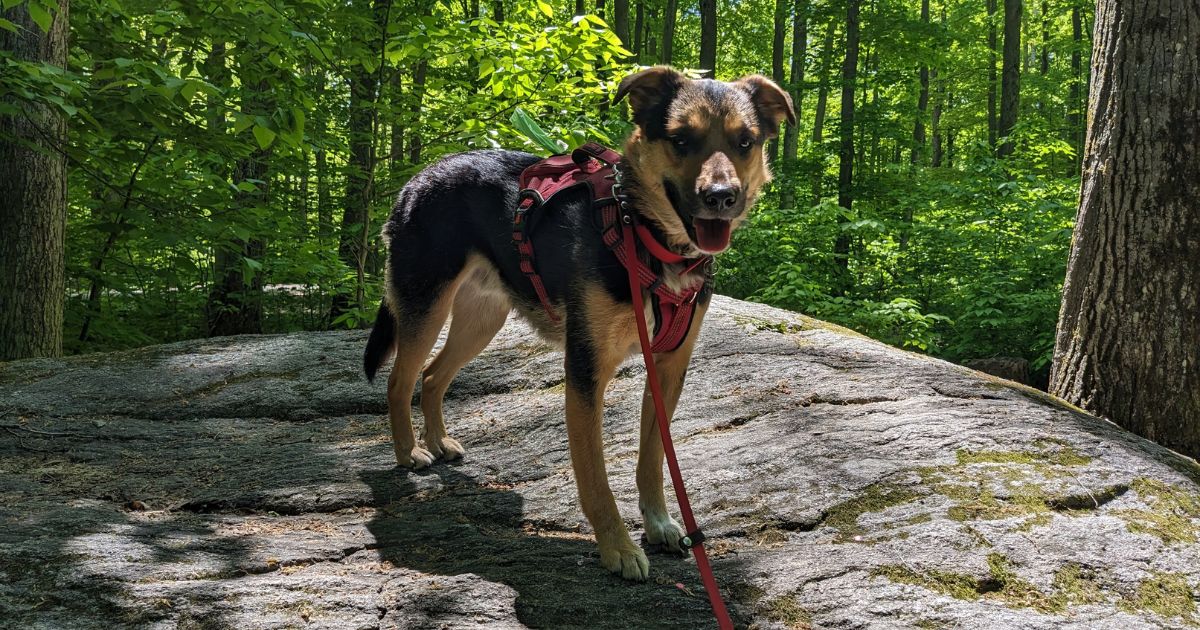
Pack Food Puzzles, Interactive Toys, and Chews
Speaking of mental enrichment, there are many items that you can bring to entertain your dog and challenge their mind.
This a great way to distract them from any triggers that may be present, like nearby campers.
When camping with a reactive dog like our little man Lucifer, we feed all meals using a food puzzle or snuffle mat. This slows him down and taps into his natural foraging instincts.
Other items we love to pack include lick mats, interactive treat toys, and plenty of chew toys/treats.
Advocate for Your Dog
As a reactive dog parent, nothing throws up red flags and triggers more stress than the moment that you see a person or off-leash dog heading in your direction.
Even the most well-meaning people can create a dangerous situation when approaching a reactive dog. Unfortunately, this is something that far too many people still ignore or overlook.
If you see a situation going south, it is your responsibility to protect your dog.
This may mean moving between your dog and a trigger, speaking up to tell people they can’t approach, or removing your dog from a situation entirely.
Your dog can’t speak up for themselves – so you need to be ready to do it!
Consider Muzzle Training
Muzzles are often judged and stigmatized. But using a properly fit basket muzzle on a dog that has been conditioned shouldn’t be undervalued.
We began muzzle training with Lucifer soon after adopting him. Why? We want to set him up for success!
An appropriately fit basket muzzle will allow your dog to pant freely, drink water, and take treats.
This is an added layer of protection if we are in a busier or highly populated area. It not only protects others from my dog if he’s pushed to the point of nipping, but it also protects him.
Be Prepared to Pack Up and Go
The most important thing you can do for your reactive dog is to be familiar with their limits and willing to call it, should the situation come up.
If you book a 4-night camping trip and have to leave after night 2, don’t view that as a failure.
Sometimes, we must prioritize our dogs and their needs over our own desires. Even if that means cutting a vacation short.
Final Thoughts
You can successfully enjoy camping with a reactive dog, but it requires careful planning and preparation.
Take the time to learn your dog’s triggers and be familiar with their body language. Knowing this, you can work towards avoiding situations where your dog may be pushed over threshold.
At the same time, ensure you are prepared to step in if a situation is taking a bad turn.
Set up your campsite strategically to reduce or eliminate triggers, where possible. This will allow both you and your dog to relax and enjoy your time.
Never forget – a reactive dog is NOT a bad dog!
The goal is to plan a trip that prioritizes safety and happiness for everyone involved, even if it looks a little different from what you first envisioned.
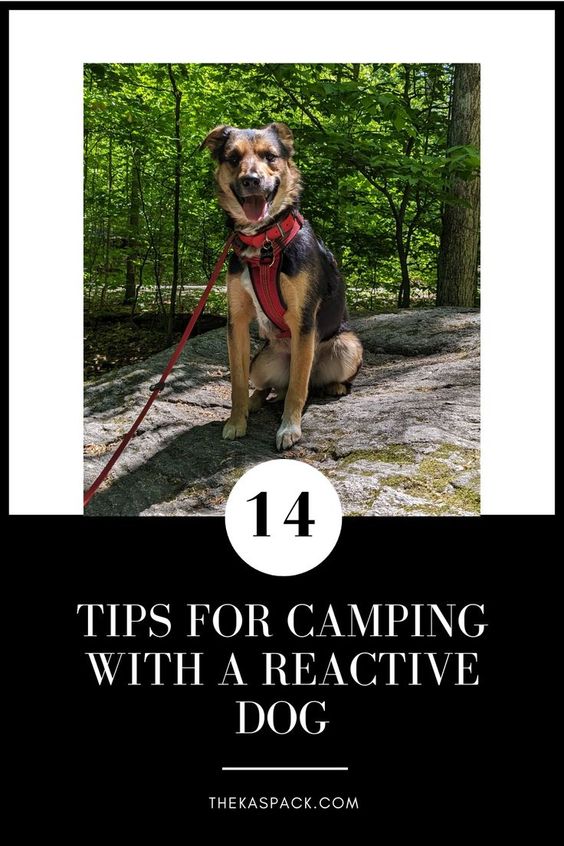
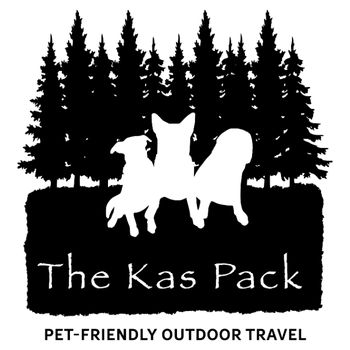
Great post! Henry is both sight and sound-reactive. But it’s generally because he wants to meet and play with whoever he sees or is making the noise. I’m grateful that he’s only a bit over 13 pounds. So, when I see loose dogs on trails, I can reach down and pick him up easily. Henry would play with anything (or try) including a bear. That means I have to be the responsible one. I have to say I also don’t appreciate the dog parents that let their dogs loose and roam 30-40 yards ahead of them. Then they yell “they’re friendly”. Honestly, I don’t care. I’ve started yelling back either “Mine’s not” or “Mine’s contagious”. That generally gets them to round up their pups in a hurry regardless of how friendly they might be. It’s kind of too bad you can’t red card dog parents and they’re teleported off the trail with their dogs for bad behavior. Maybe when we reach The Jetson’s age. 😉
The “It’s okay, he’s/she’s friendly” crowd is one of my biggest pet peeves when out with our dogs. I’ve taken to replying with “I’m not,” which usually works.
Hey!
Also camping with a reactive doggo! We’ve mainly been to Awenda “turtle” campsites and find that they are pretty coverred/private. Do you have any other suggestions for good campground with nice private sites? We come from barrie
We have covered a few different campgrounds on our YouTube channel (https://www.youtube.com/channel/UC0iDVMNUMhWgjl9QGEBvT0Q) while camping with our reactive pup.
Great tips!! We might be camping later this summer and it will be my Chewy’s first camping trip. We will definitely keep these tips in mind. My favorite is, “Sometimes, we must prioritize our dogs and their needs over our own desires.”
This so important to remember in all situations.
That’s so exciting for you and Chewy! Travelling with our pets is such a fun and meaningful way to spend time together and strengthen our bond. We can’t imagine travelling now without them.